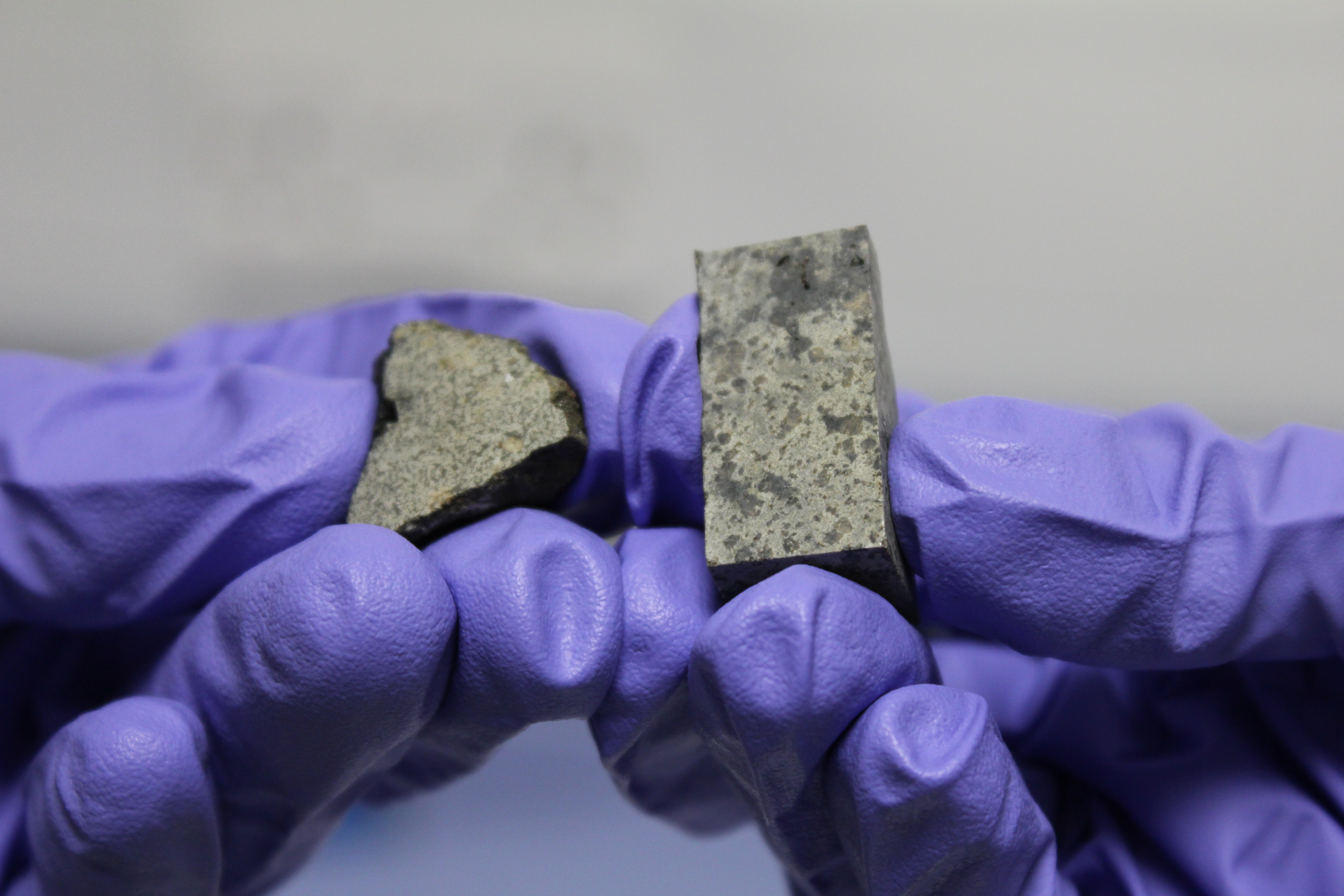Knowing when, and how, there was liquid water on Mars is key to understanding the planet's potential for hosting life. Although it's known that Mars had oceans almost 4 billion years ago, modern water found on the planet is predominantly frozen as ice. Unlike the many samples from the Moon brought back by Apollo astronauts, the only rock samples from Mars we have on Earth are meteorites.
.JPG)
Inside these meteorites are hydrous (water-containing) phases, that show evidence of recent fluid flow on Mars. This flow could have been caused by asteroid impact, volcanic eruption, or both. Compared to the 4 billion-year-old Martian oceans, these rocks, from the Natural History Museum and NASA's Johnson Space Centre, are very young: a mere 500 million to 1.3 billion years old! Using the unique insight of neutron tomography on IMAT, the hydrous phases will be visible in three dimensions, enabling the researchers to see if the hydrous phase is present in a particular formation, such as veins through the material. This will give them an insight into how the water got there.
Lead researcher, Professor Caroline Smith, Head of Earth Sciences Collections and Principal Curator of Meteorites at the Natural History Museum (pictured, right), explains how you can tell that a meteorite has come from Mars: “It has it written all over it! Just like a stick of Blackpool rock has “Blackpool" in every slice, so does Martian rock. The types and textures of the materials, and the gases trapped inside the rock are a clear sign that this type of meteorite has come from Mars."
“The rocks are volcanic, and therefore must have been created on planet through igneous activity. After the Viking rovers on Mars measured the atmospheric composition, we know what the mix of gases is on Mars. When we look inside the minerals in the rock we find that the composition of these trapped gases is the same as Mars' atmosphere. You might expect these rocks to be red, as Mars appears, but actually the whole planet is covered in a rusty dust, which gives it the red colour. When this is removed, the rocks are all sorts of colours."
“We are among the first to use neutron tomography for imaging Martian meteorites, and we are demonstrating the value of the technique ahead of the most exciting possibility – getting rocks brought back directly from Mars," says Josefin Martell, a PhD student at Lund University whose project is focussed on exploring the use of neutrons for extra-terrestrial applications.
The NASA Mars 2020 rover that leaves Earth this year will collect samples with a series of follow-up missions bringing these rock samples back directly from Mars. Interestingly, when Mars rocks return to Earth, they will be classed as “Hazardous until proven otherwise", due to the unknowns around whether the samples contain life.
 A sample from one of the meteorites that the group are studying on IMAT will actually be going back to Mars on the rover. This is so that it can be used as a comparison for the measurements taken on the planet before the rock samples are brought back to Earth on a later mission.
A sample from one of the meteorites that the group are studying on IMAT will actually be going back to Mars on the rover. This is so that it can be used as a comparison for the measurements taken on the planet before the rock samples are brought back to Earth on a later mission.
However, when these samples do arrive back on Earth, currently planned for early next decade, there will be a lot of scientists wanting to get their hands on them! Because of this, the international community is working together to identify the best techniques that could be used to characterise the rocks, and what to prioritise.
“Not only do we need to know what information the technique can provide, we also need to measure the effect it will have on the sample." Explains Dr Luke Daly, Research Associate in Solar System Science at the University of Glasgow. “Other techniques, such as noble gas or organic analysis, are destructive, so if a sample can be measured using neutron tomography before being analysed for its noble gas content, then it could reduce the pressure on the demand for samples."
With STFC RAL Space contributing to the 2020 ESA Rosalind Franklin Mars rover mission, and ISIS' proximity to Diamond Light Source, if neutron tomography proves to be a valuable characterisation method, Harwell could be an ideal place for some Mars rock to be sent, as the neutron experiments and X-ray experiments could be done at the same location.
.JPG)
Luke Daly, Josefin Martell and Caroline Smith at IMAT with their samples of Martian meteorites.
